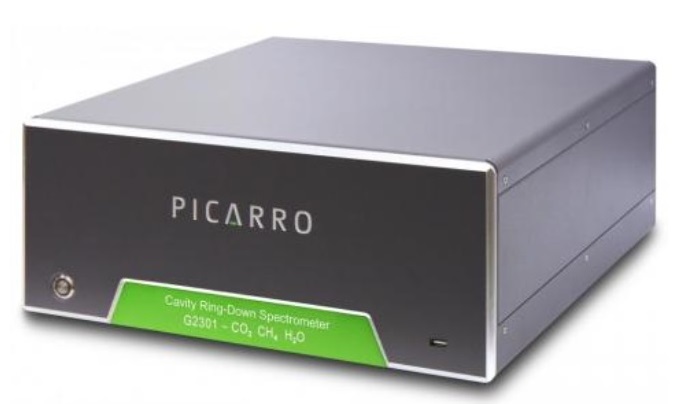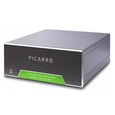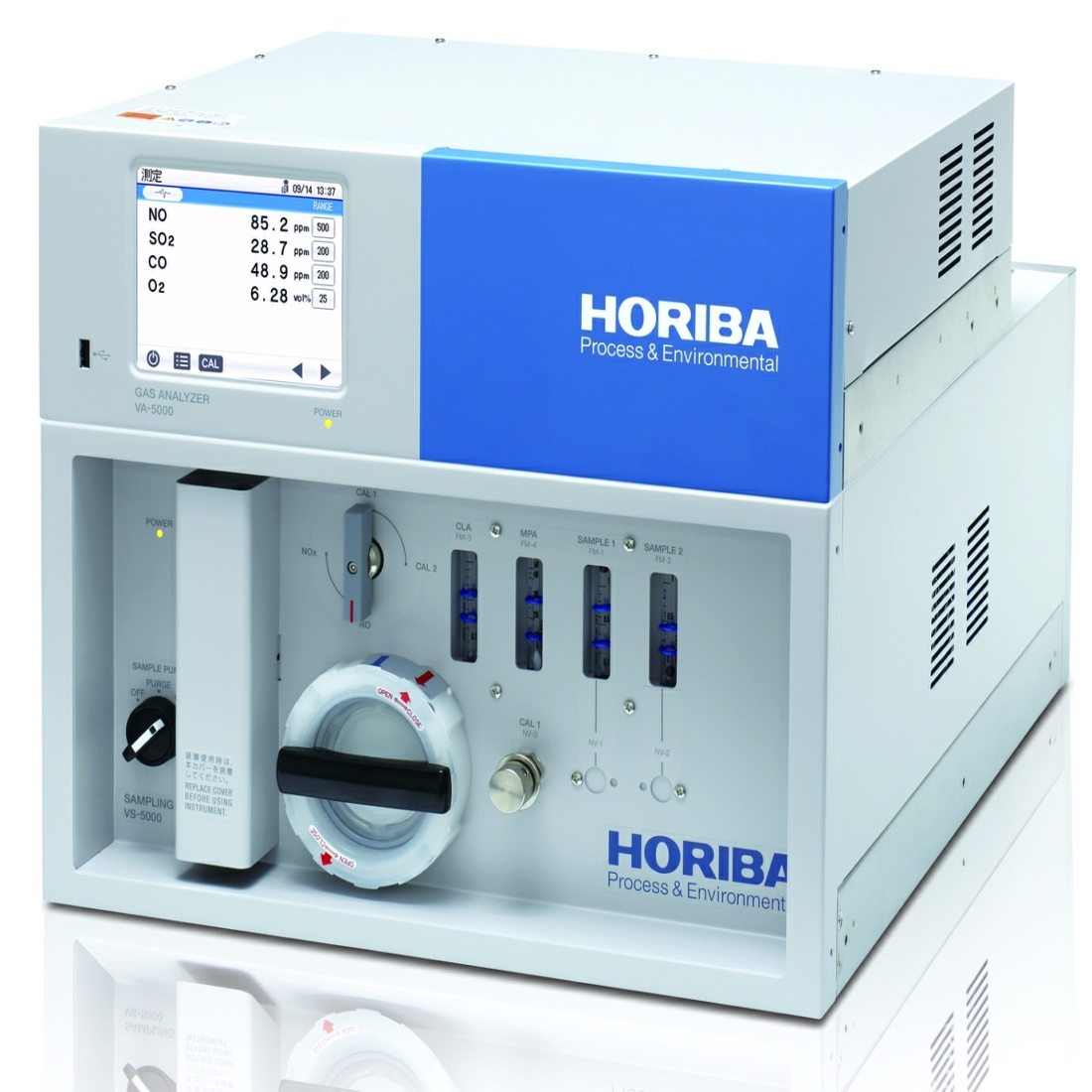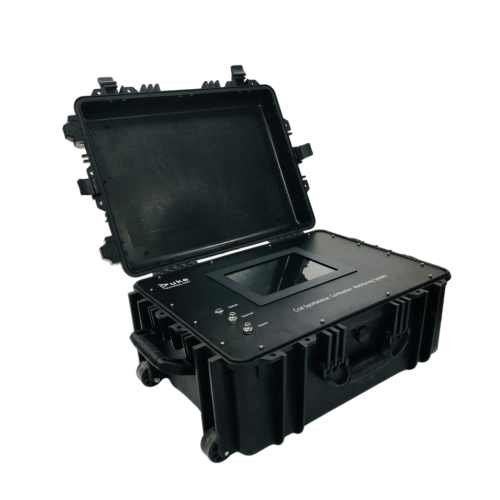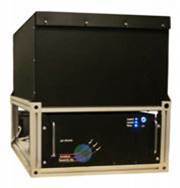基于大气中甲烷对全球气候的巨大影响力,许多研究人员对甲烷排放感兴趣。尽管一些甲烷排放源已被记录在案,但全球甲烷排放指标和无数尚未量化的甲烷源仍存在重大不确定性。在最近的全球变暖的人为因素部分中,大约25%可归因于甲烷排放。根据环境保护基金会主席弗雷德·克虏伯的说法,化石能源部门的排放是全球最大的甲烷工业来源。此外,国际能源署已将控制上游石油和天然气生产产生的甲烷排放确定为缓解温室气体排放的五个关键机会之一。
基于这些原因,由联合国环境署牵头的国际组织(政府、非政府和私营部门)正在共同开展一系列科学研究,旨在测量和量化石油和天然气部门的甲烷排放量。这些石油和天然气甲烷科学研究由气候和清洁空气联盟(CCAC)、环境保护基金(EDF)、石油和天然气气候倡议(OCGI)和欧盟委员会组织和管理,是应EDF和一些能源公司的呼吁而设计建立。在COP21峰会上,为了更好地量化该行业对全球甲烷排放的贡献,作为该指令的一部分,已经资助了三项新的实地研究(挪威、罗马尼亚和阿尔及利亚),以测量三个石油和天然气产量丰富的不同国家的甲烷排放量。这三项研究将从挪威开始,从2019年8月到2020年3月连续进行。联合国与Scientific Aviation公司合作完成了这些研究的空中部分。
方案详情

A Small Airplane Makes a Long Journey Across theAtlantic for the Sake of Methane At Picarro, we love seeing how customers and partners are implementing our systemswith their own. In these three studies by Scientific Aviation and the UN, a PicarroG2301 takes to the skies of Norway, Algeria,and Romania to measure and quantifymethane emissions around their respective oil and gas sectors. We’d like to thank Prof.Stephen Conley (Scientific Aviation, Inc.), the UN, and the pilots and scientists atScientific Aviation Inc.for making this huge endeavor possible. Read on. From the Arctic tundra to the tropics of Mexico, from Los Angeles to Long Island,Stephen Conley and the pilots and scientists at Scientific Aviation have tracked andmeasured air pollution throughout North America using their fleet of light aircraft. For thelast ten years, Scientific Aviation has filled a need in the air quality community for readilyavailable and lower-cost airborne research platforms, and has made a name forthemselves in the United States working on projects like NASA's ABoVE and NOAA’sozone studies in Las Vegas and the Uintah Basin. Steve Conley and Sonja Wolter beside Mooney airplane Global partners team up to confront methaneMethane emissions are of interest to many due to the powerful effects of atmosphericmethane on global climate.Although some sources of methane emissions are well-documented, there remains significant uncertainty in the global methane budget andcountless methane sources that have yet to be quantified. Of the man-made portion ofrecent global warming, approximately 25% can be attributed to methane emissions. According to Fred Krupp, president of the Environmental Defense Fund, emissions fromthe fossil energy sector is the largest global industrial source of methane. Moreover, theInternational Energy Agency has identified methane emissions from upstream oil and gas production as one of five key opportunities for greenhouse gas mitigation. For these reasons, a partnership of international organizations (governmental, non-governmental, and private sector), spearheaded by UN Environment, are workingtogether on a series of scientific studies aimed at measuring and quantifying methaneemissions from the oil and gas sector. These Oil and Gas Methane Science Studies areorganized and governed by the Climate & Clean Air Coalition (CCAC), theEnvironmental Defense Fund (EDF), the Oil and Gas Climate Initiative (OCGI), and theEuropean Commission, and were devised in response to a call by EDF and severalenergy companies at the COP21 summit to better quantify the industry's contribution toglobal methane emissions. As part of this directive, three new field studies have beenfunded to measure methane emissions in three different countries that have prolific oiland gas production: Norway, Romania, and Algeria. These three studies will occurconsecutively August 2019 through March 2020, beginning in Norway. The UN haspartnered with Scientific Aviation in order to complete the airborne component of thesestudies. A Big Job for a Small Airplane The airplanes that Scientific Aviation operates are single-engine propeller-drivenMooneys that have been modified for atmospheric research. Under the starboard wingprotrude a series of air inlets through which air is drawn into the on-board instrumentation. Between the wings sit the pilot and the flight scientist. Space is alimited commodity on these small aircraft, so there is only room for two people; the restof the cabin is used for science instrumentation. Weight is similarly restricted, and oftena balance must be struck between instrumentation, fuel load, and crew. A PicarroG2301-fanalyzer is used to measure methane, since it offers a high-qualitymeasurement while being also relatively lightweight and compact. Along with thechemical measurement, horizontal wind speed and wind direction are also measuredon-board. The combination of these measurements allows for a flux rate to becalculated from a specific source. Left to right: air inlets,Mooney airplane, Picarro G2301-f lf oil and gas production is one thing that Norway, Romania, and Algeria have incommon, another is that they are all located on the opposite side of the Atlantic Oceanfrom where the Sci Av fleet is based. For a large jet aircraft, a hop across the Atlantic ishardly a challenge, but making that same trip with a Mooney is an undertaking that isnot entered into lightly. For decades, highly experienced (and highly adventurous) pilotshave made the journey across the Atlantic in small airplanes, but it is not without risk.Although the probability of an engine failure is exceedingly rare (especially for well-maintained airplanes), an engine failure in a single-engine airplane could certainly makefor a bad day-and that failure occurring over the water between Greenland and Icelandwould definitely make it worse.This is generally enough to make most people shy awayfrom attempting the trip. But when the CCAC and the UN leadership called on ScientificAviation to lead the airborne methane measurements and bring one of their planes overto Europe, it was a challenge that they gladly accepted. Have Picarro-Will Travel In early August, Steve Conley set out from SciAv's home airport in Boulder, Coloradobound for Bergen, Norway. The entire journey took six days, with overnight stops in LaGrande Riviere, Iqaluit, Kangerlussuaq, Reykjavik, and (somewhat rainy) Wick, beforereaching the (tremendously rainy) coast of Norway. Airplane view of Iceland In Norway, petroleum takes the top spot as the country's largest industry. The rich oiland gas deposits located within the Norwegian continental shelf, deep below the frigidwaters of the North Sea, have made Norway the 8th largest producer of oil and the 3rdlargest producer of natural gas in the world. Over 180 offshore rigs currently stand in theNorwegian North Sea; however, due to their relatively inaccessible location (some over150 miles offshore), the total emissions from these facilities have never been fullymeasured. Over the last few weeks, Scientific Aviation worked towards filling in thesedata gaps by quantifying the methane emissions from a sampling of the offshore rigs inthe North Sea. Left: Refilling the Mooney upon arrival in Bergen, Norway; Right: Steve in the plane'scockpit The use of a Picarro is absolutely instrumental in this and all of SciAv's atmosphericanalyses. Through these quantification flights, they contribute to an entirely newunderstanding of the global methane budget and allow for informed decision makingfrom both a private and public perspective. To see more photos and videos of their epic adventure, follow Scientific Aviation onTwitter: @FlySciAv and on LinkedIn: @Scientific Aviation.
确定
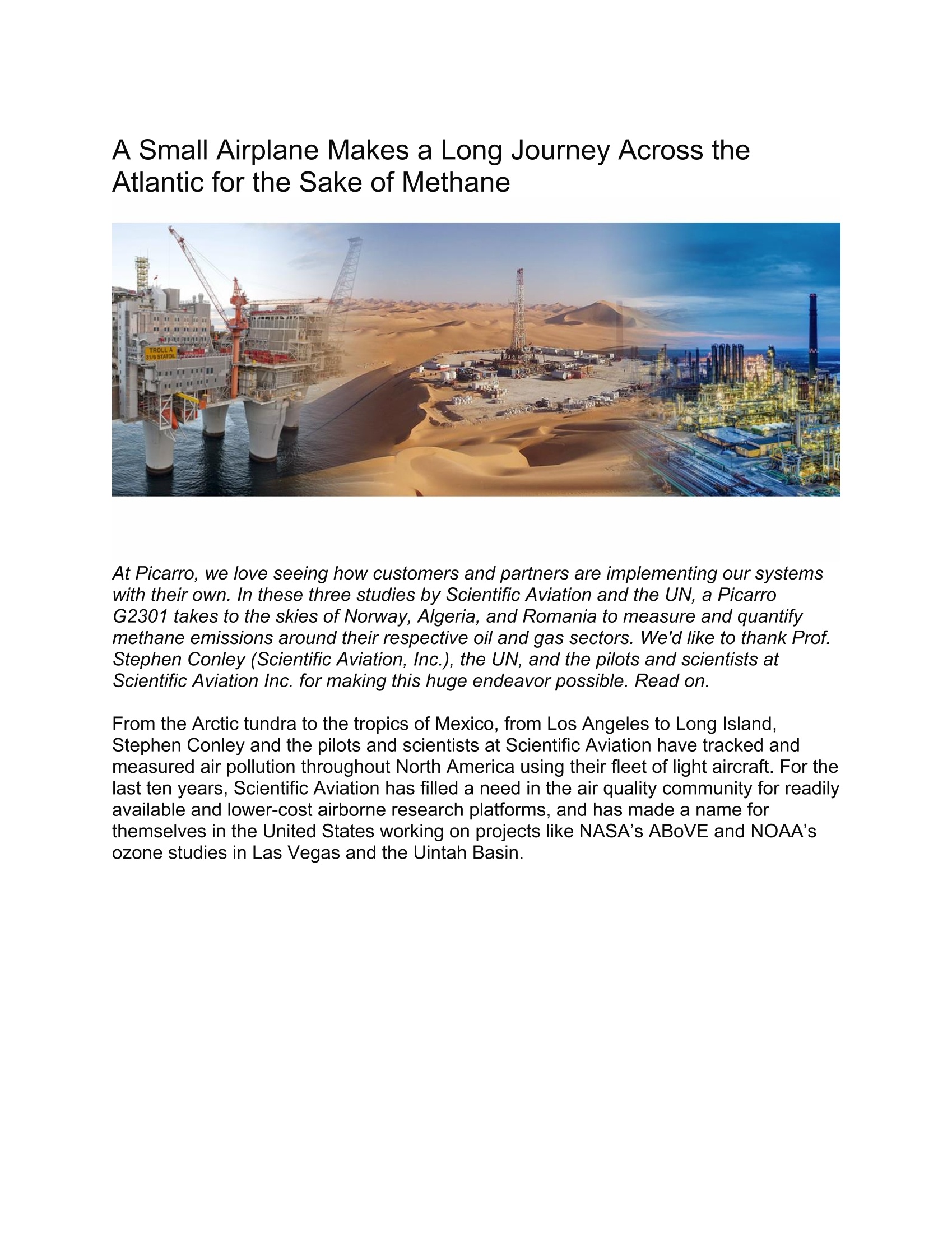
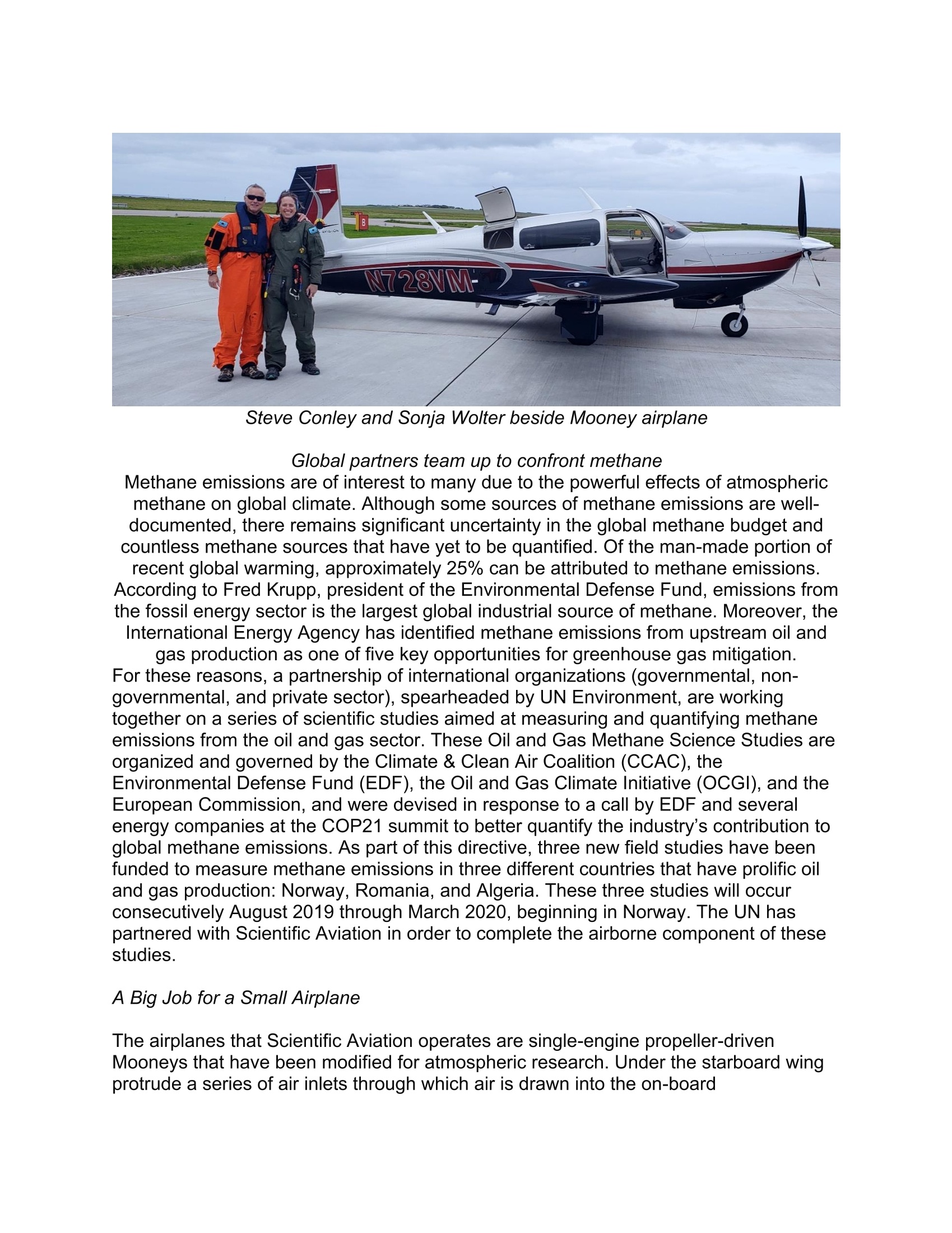

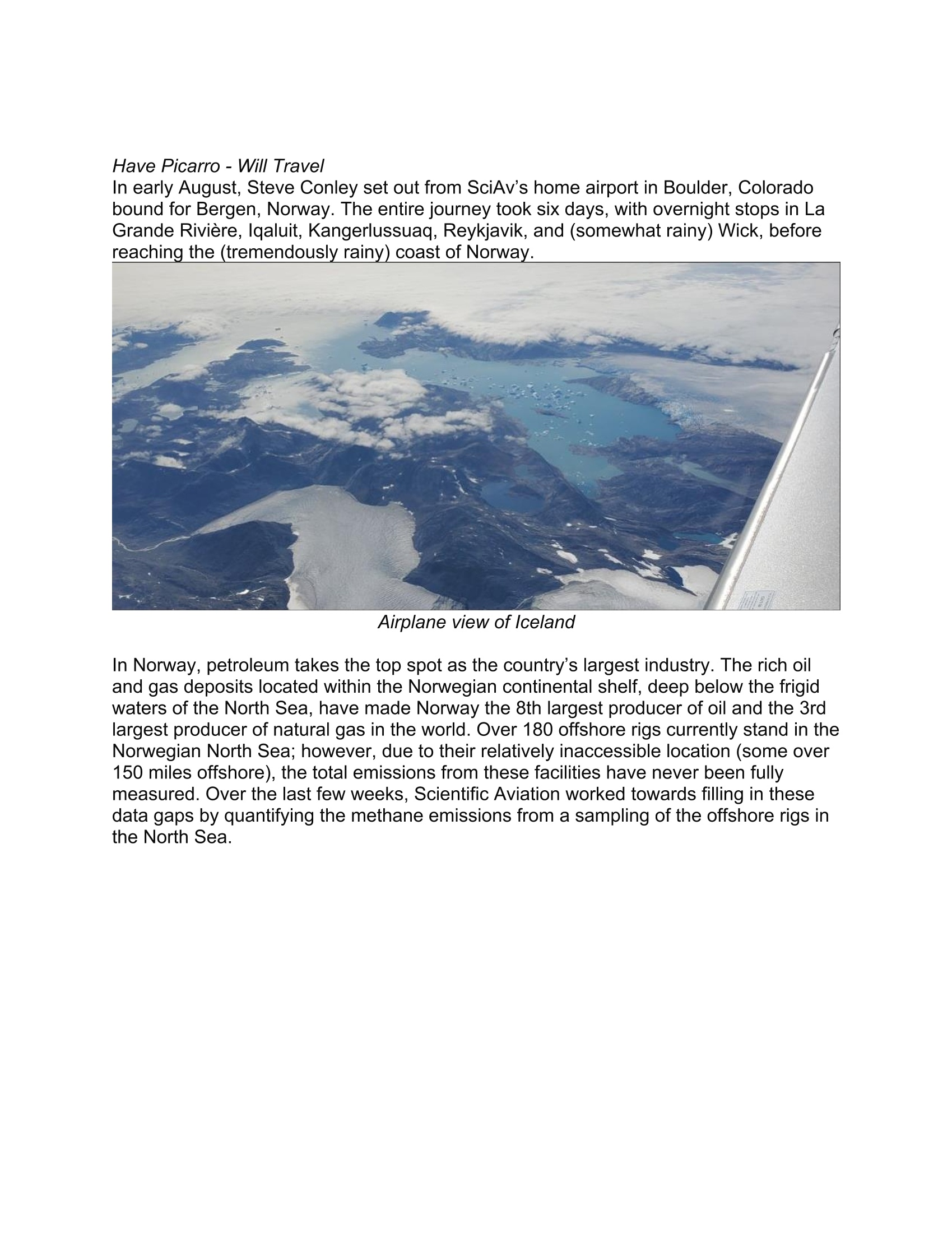

还剩3页未读,是否继续阅读?
北京世纪朝阳科技发展有限公司为您提供《大气中甲烷检测方案(多气体分析仪)》,该方案主要用于空气中分子态无机污染物检测,参考标准--,《大气中甲烷检测方案(多气体分析仪)》用到的仪器有Picarro高精度温室气体分析仪G2301(CO2/CH4/H2O)
推荐专场
相关方案
更多
该厂商其他方案
更多

